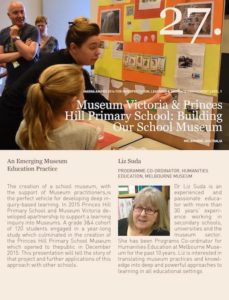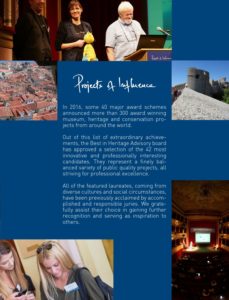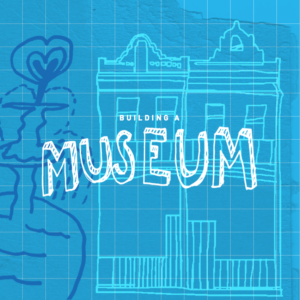A Year 3/4 project to create a museum was awarded winner in the Museums and Galleries National Awards (MAGNA 2016) for Interpretation Learning & Audience Engagement. Museums Victoria then presented the project at the Best in Heritage 2017 Projects of Influence Conference in Croatia.
This Inquiry came out of a consideration of how to build the skills and thinking required for children to transition from looking at themselves and their place in the world to addressing and focusing on global concepts and the ways in which the individual can impact on global events and actions.
The Museum Inquiry explored different systems of the world and where these fit in our lives socially and culturally, and the knowledge embodied in this.
Experiences supported the children to make links between their lives and the alignment of these links with the systems of the world.
Through sharing personal artefacts, the children found a relationship between the sharing of knowledge and audience. They decided to explore museums as a model for this in our community.
How do we identify and curate important cultural knowledge?
The children explored different museums across the world to find patterns to help understand how a museum works and the decision making process museums go through prior to exhibiting.
How can we create something that is of value and has longevity in the community?
This led to the question of what if Princes Hill Primary School had its own museum? What would it look like? How would it reflect the community? What is important to the community of Princes Hill Primary School?
The children surveyed members of the community to find out what they thought would be important for the museum. A variety of exhibits were decided upon and the creation of our school museum began.
Research questions relating to museum design were developed for visits to different museums around Melbourne: How is it organised? How many artefacts are there? How old are they? How interactive are the displays? How many different senses are used?
Some groups of students went on trips to research information for their exhibits while others spoke to experts. One group walked down Lygon Street to talk to business owners about what makes their organisations iconic while others went to Princes Park to interview park goers. Botanists and entomologists spoke to some groups about their exhibits and shared their ideas of curating.
How is a museum designed?
The children invited architects, Bob Earl and Antony Martin to explain how they design buildings. They shared examples of different museums and buildings, and the process of designing which includes listening to the client, reflecting the community and being purposeful.
Pete Wilson, a designer from the Melbourne Museum also came to talk about how exhibits are designed.
How can we tell our story and express our important knowledge?
As the exhibits started to take shape feedback was requested from Cam Hocking at Museum Victoria.
To further improve the exhibits, the children took them to the Melbourne Museum for a pop up to share and receive feedback from the museum staff.
How can we share our exhibits with the community?
The children wrote a proposal to share the exhibits in the school foyer. They drew designs for how it would be set up.
The most important thing I’ve learnt about museums is that they hold a lot of interesting artefacts or precious artefacts and they are a source of information about the present and past. Hannah M.
This Inquiry project was awarded Level 1 winner in the Museums and Galleries National Awards (MAGNA 2016) for Interpretation Learning & Audience Engagement.
Building Our School Museum: an emerging museum education practice - Museum Victoria and Princes Hill Primary School
Judges: Frank Howarth (Museums Australia), Carol Cartwright (Museums Australia), Andrew Hiskens (State Library of Victoria), Jo Henwood (Educator and consultant)
Judges’ comments: This was a nice collaboration between a large institution and a local school, allowing students to view Melbourne Museum through the eyes of a curator because they were all curators. Nicely conceptualised, a key foundation was the strength of the relationship and mutual trust between the Museum’s education staff and the key teacher at the school. This is a great example of collaboration and improving the quality and value of museum visits.
The museum presented the project at the Best in Heritage 2017 Projects of Influence Conference in Croatia.
What is the Best in Heritage?
It is an annual, global conference which features presentations of award winning museum, heritage and conservation projects. The event always takes place in the UNESCO heritage city of Dubrovnik. The award winners from the previous year come in from all over the world to present their success stories. It is a rare occasion where the professional world meets the best projects conceived and implemented by civil society organisations, both belonging to the growing heritage sector.
We would like to acknowledge Cam Hocking and the team at Museum Victoria who have supported us from the beginning. Their role in our inquiry and their understanding of what we were trying to achieve has been instrumental in the Princes Hill Primary School Museum coming to life. Thank you all for helping us to make our big ideas become a reality.
An overwhelmingly heartfelt thank you to Teresa DiSipio whose creative skill and eye for detail is evident in every page of this wonderful book.
Click on image to open book.









